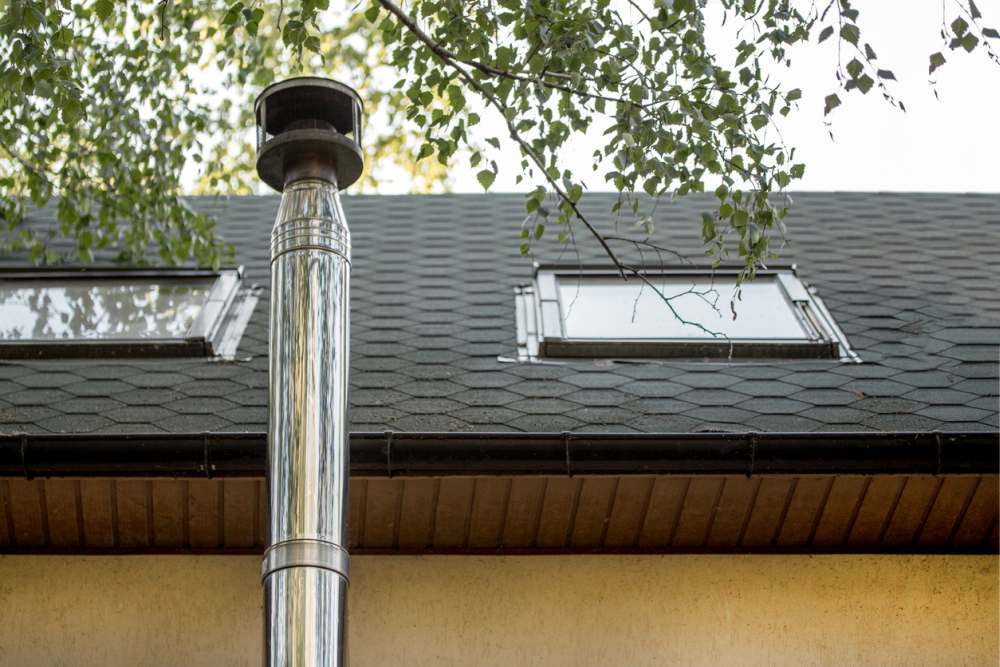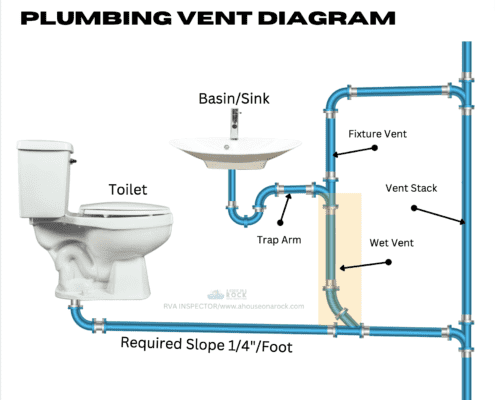The Benefits of Proper Ventilation in Your Plumbing System
The Benefits of Proper Ventilation in Your Plumbing System
Blog Article
What are your beliefs about Why Plumbing Air Vents Are Important?

Proper ventilation in plumbing systems is often overlooked, yet it is essential for keeping the performance and safety of your home's pipes. Ventilation assists regulate atmospheric pressure, prevent the accumulation of dangerous gases, and guarantee the effective elimination of waste. In this overview, we will check out the relevance of proper pipes air flow, how it functions, and the benefits it offers your plumbing system.
Just How Ventilation Functions in Plumbing Equipments
Atmospheric Pressure Regulation
Appropriate ventilation maintains balanced air pressure within the plumbing system. When water streams via pipes, it displaces air. Without sufficient ventilation, this variation can produce unfavorable pressure, leading to reduce drains pipes or siphoning of water from catches, which can create unpleasant smells to seep right into the home.
Preventing Sewer Gas Accumulation
One of the most essential features of pipes vents is to stop sewage system gases, such as methane and hydrogen sulfide, from collecting within the home. These gases can pose severe health and wellness risks and are extremely flammable. Vent pipes permit these gases to escape safely outside.
Aiding in Waste Removal
Ventilation aids in the efficient removal of wastewater by avoiding airlocks in the drain system. When air can move freely through the vents, it enables water and waste to move smoothly with the pipes, lowering the threat of clogs and backups.
Advantages of Proper Ventilation
Improved System Effectiveness
Appropriately aerated pipes systems operate a lot more successfully, with less obstructions, faster draining pipes, and much less stress on the pipes. This efficiency expands the lifespan of the pipes system.
Improved Air Quality
By stopping sewer gases from entering your home, proper air flow contributes to better interior air top quality, making your living atmosphere healthier and much more comfy.
Stopping Water Damages
Adequate air flow aids stop water from being siphoned out of traps, which can cause drain gases going into the home and triggering water damage with time.
Actions to Make Certain Appropriate Ventilation
Consulting Pipes Codes
Constantly speak with local pipes codes when creating or modifying your pipes system. These codes offer the necessary standards for appropriate airing vent and guarantee your system fulfills safety standards.
Regular Assessment and Upkeep
Routine examinations can help recognize possible ventilation problems before they become major troubles. Upkeep tasks, such as cleaning up air vent pipelines and checking for obstructions, are vital for keeping the system in good working order.
Specialist Setup
For new installations or major adjustments, it's important to work with a professional plumbing technician. They have the proficiency to guarantee the ventilation system is correctly created and mounted according to code.
Recognizing Ventilation in Plumbing
Air flow in pipes refers to the network of pipelines that enable air to flow via the drain system. These vents serve numerous objectives, consisting of controling air pressure within the pipelines, stopping sewer gases from going into the home, and helping in the smooth circulation of wastewater.
Types of Pipes Vents
Key Heap Vent
The primary pile vent, also referred to as the air vent pile, is the main air vent in a plumbing system. It extends from the main drainpipe align with the roofing system, enabling gases to get away and fresh air to enter the system.
Branch Vent
Branch vents connect to the primary stack air vent and offer private components, such as sinks, bathrooms, and showers. These vents guarantee that each component has appropriate ventilation to work correctly.
Air Admittance Valve (AAV).
An Air Admittance Valve (AAV) is a one-way shutoff that enables air to go into the pipes system without the requirement for a traditional air vent pipe prolonging through the roofing system. AAVs are frequently utilized in renovations or locations where installing a typical air vent is impractical.
Signs of Poor Air Flow in Plumbing.
Slow Draining Fixtures.
If your sinks, bathtubs, or commodes are draining gradually, maybe an indication of poor air flow. Poor air flow can develop a vacuum cleaner effect, making it tough for water to drain effectively.
Gurgling Sounds.
Gurgling audios coming from drains are usually a result of air being sucked via water traps as a result of adverse pressure in the pipelines. This is a clear indicator of not enough air flow.
Unpleasant Odors.
Sewage system odors inside your home are a red flag that your plumbing system is not effectively ventilated. This could indicate that sewage system gases are not being properly aired vent outside, causing possibly hazardous problems.
Usual Ventilation Mistakes.
Poor Vent Sizing.
Making use of undersized vent pipelines can lead to inadequate air flow and pressure discrepancies in the system. It's important to make use of vents that satisfy the details demands of your pipes system.
Improper Vent Positioning.
Putting vents as well far from the fixtures they offer can lower their efficiency. Proper positioning ensures that air can flow freely and successfully with the system.
Ignoring Code Needs.
Building regulations offer specific guidelines for pipes air flow. Overlooking these codes can lead to a system that falls short to function appropriately and may cause expensive repair work or carcinogen.
Conclusion.
Appropriate ventilation is a vital element of any kind of plumbing system, guaranteeing that it functions effectively and safely. By recognizing the value of air flow, recognizing the indications of inadequate ventilation, and taking actions to maintain your system, you can protect against costly concerns and safeguard your home's air quality.
What is a Plumbing Vent and it's used for?All plumbing systems in residential and commercials construction have a plumbing vent. It doesn’t just vent unwanted odors from the drainage system to the outside; it actually serves an important purpose by supplying air to the system.
The plumbing drainage system is actually called a drainage, waste and vent (DWV) system. When water flows down the piping, an air supply (vent) is needed to allow the water to flow. Think of the vertical pipe as a drinking straw. If you plug the top end of a straw, liquid won’t drain from it.
The DWV system in your building consists of a series of pipes connected to each fixture; they extend above each fixture, and the system terminates at an open pipe that extends through the roof. This piping allows air into the system and prevents unbalanced pressures in the piping.
?The vent also prevents the system from drawing water out of a trap at the fixture with the characteristic “glug-glug-glug” as the drain gasps for air. Plumbing traps should drain smoothly and never “glug” or gasp for air.
If you have a drain that empties slowly or gurgles as it drains, this may indicate a venting problem. If you flush a toilet and the sink gurgles, there’s definitely a vent problem. It is good idea to have a Plumber check this.
https://www.ameliashomeinspection.com/blog/what-is-a-plumbing-vent-and-its-used-for

As an enthusiastic person who reads about What Is A Plumbing Vent & How Do They Work?, I thought sharing that editorial was essential. Appreciated our posting? Please quickly share it. Help someone else locate it. I appreciate reading our article about What Is a Plumbing Vent and Why Is It Important.
Quote & Schedule Report this page